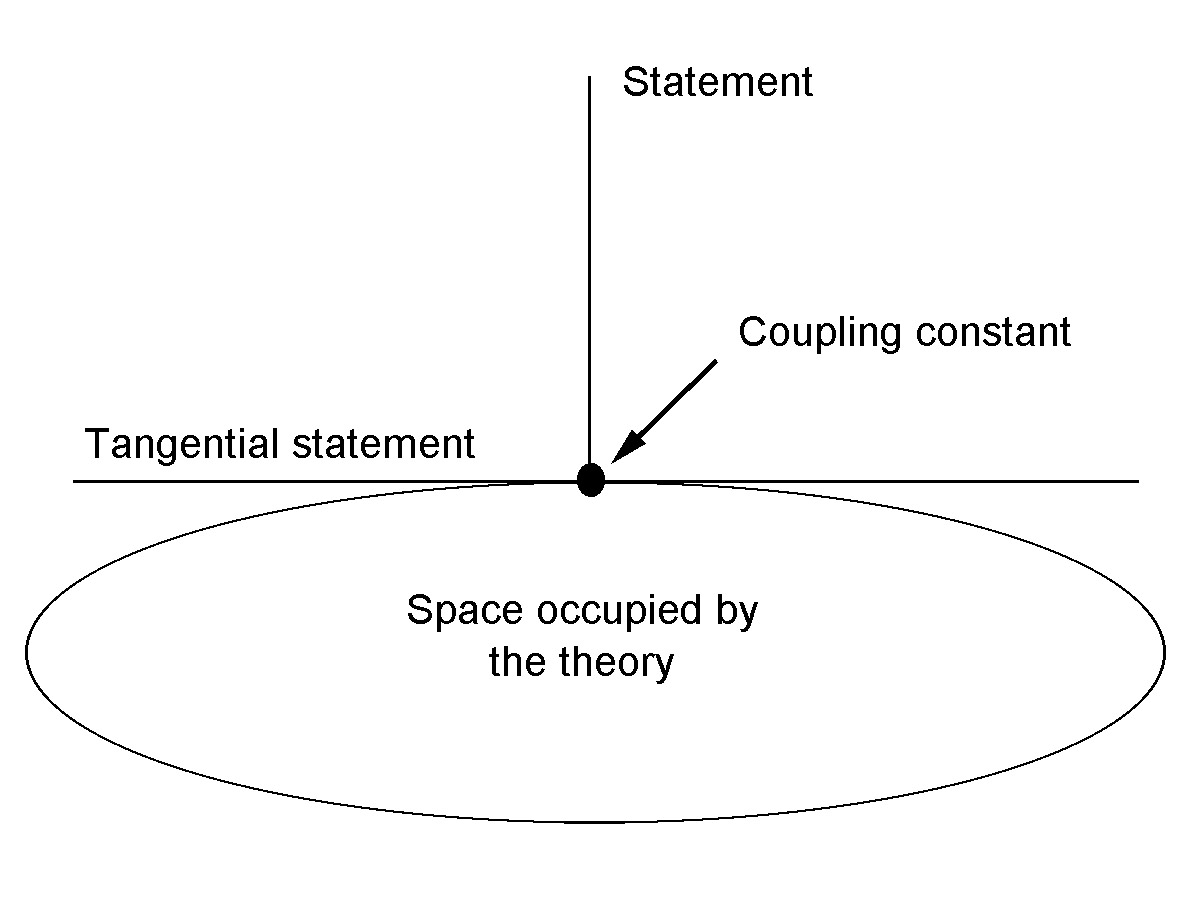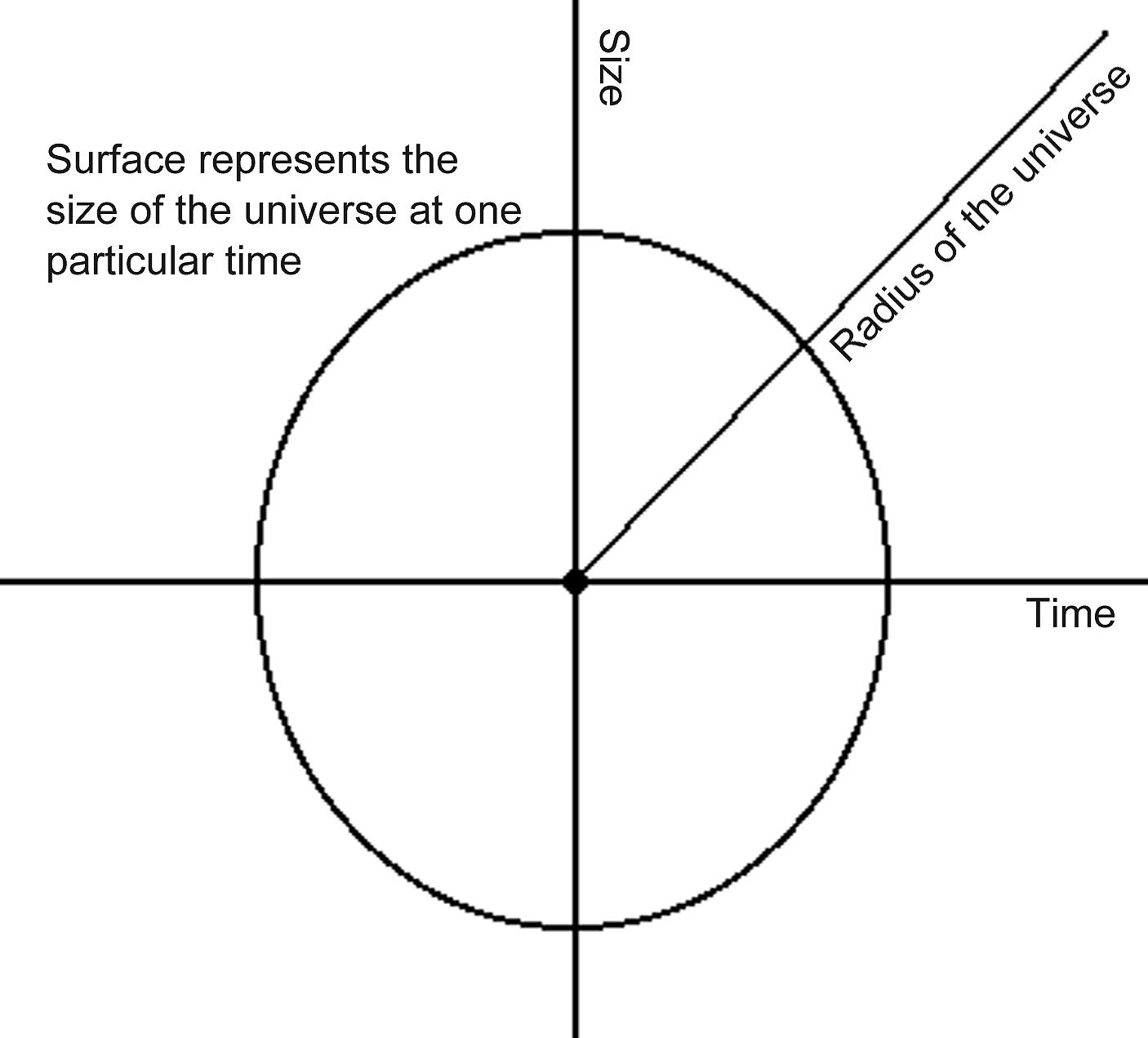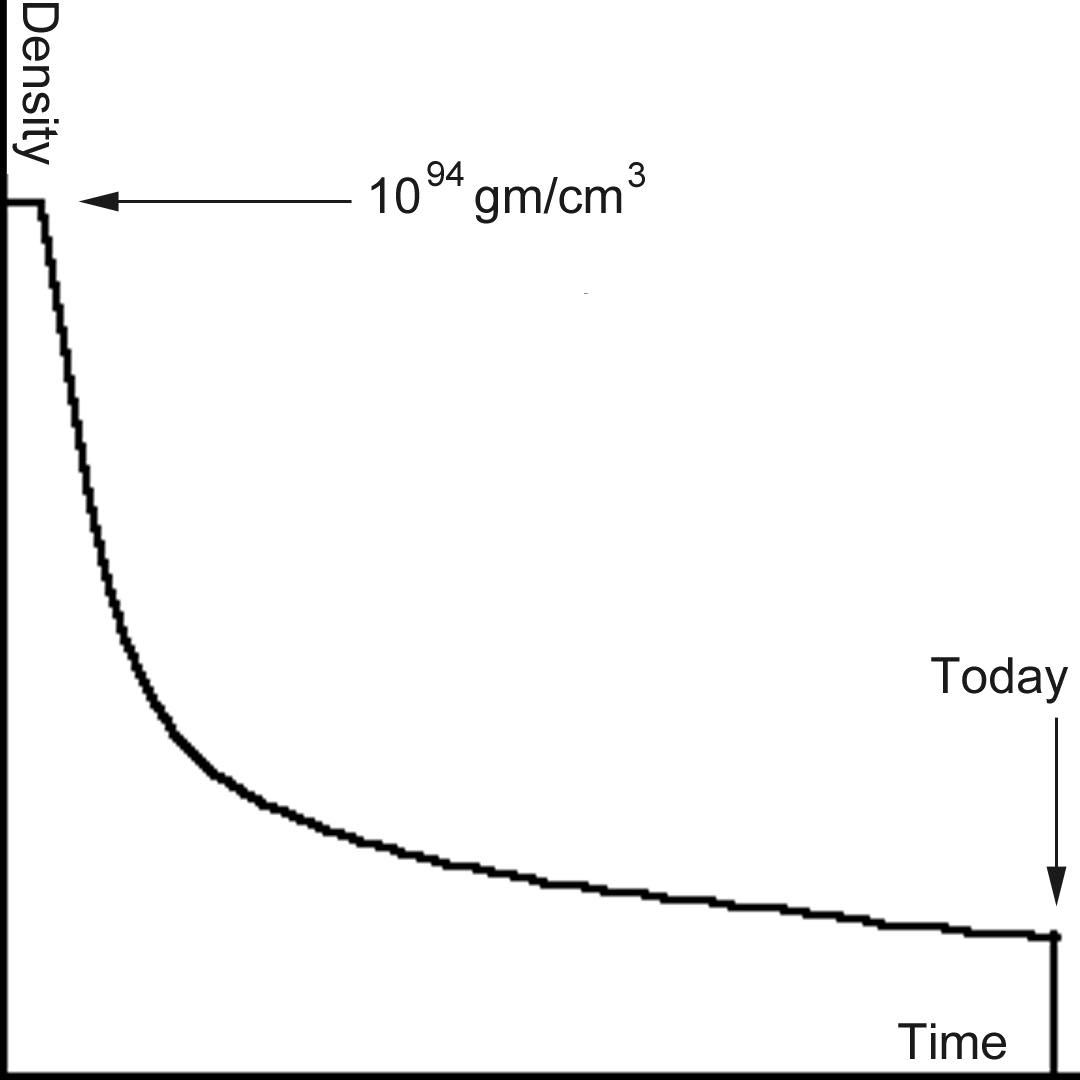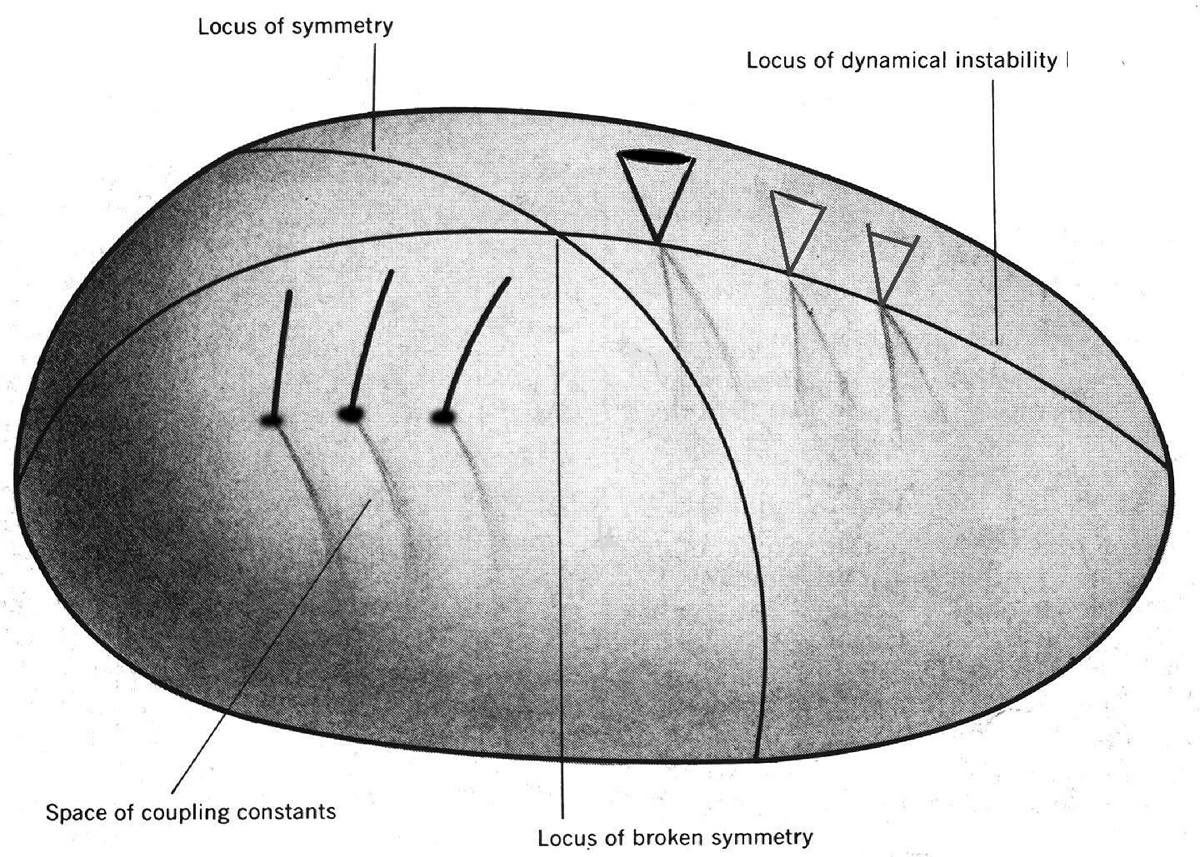Part III: SPACE OF THEORIES
by
Gerardus D. Bouw, Ph.D.
In the first installment of this series we examined the history of scientific theories from man's realization that Isaiah 1:18 claims that God is reasonable and should thus have created a reasonable universe. Reason thus became a tool whereby man could learn and explore God's creation. But whereas Western science was thus founded on reason, today's science is as far from reason as it can go and still pretend to be science. Today science is political and, by definition, politicians look out for their own interests, not the interests of the truth, justice, or even their constituents. Scientists today chiefly protect their own turf, their own pet theories; they have no need of the truth. Reason has been abandoned for the emotional.
In the second installment we looked at the structural elements of a theory. We saw that theories are constructed about a problem which is pictured as a gap or hole in our knowledge, and which gap is technically called a vacuum state. Facts, formally called coupling constants, are points which form the foundations for statements (lines) which speak to outline the problem. If the statement is perpendicular to the surface, it is said to be “upright” and is technically known as a normal line. If the statement passes through the point along the surface, so that it is tangential to the surface, it is said to lie on the surface and, as it does not describe the surface, it is called a lie (see Figure 1). The set of all such statements constitutes the theory. Typically, the statements are grouped into aggregate structures such as sentences, paragraphs, chapters, and volumes. Statements, when expressed in mathematical formalism, are called formulae. A statement itself may be broken down into smaller pieces called words. A word is the smallest unit of information. Although a word may be split into letters, the individual letters have no meaning. So it is that we read in 2 Corinthians 3:6 that “…the letter killeth, but the spirit giveth life.”
In this, the third an final installment, we shall look at the properties which theories have in the light of the formalism which we developed in the previous two installments.

Figure 1: Statements about a coupling constant (a point of fact).
Theories about origins
In what follows we shall assume that our theory is two-dimensional, that is, we shall picture it as an area. The surface of the area is the set of all possible coupling constants. (In reality we never know the complete set, indeed, as we shall see in the generalized case, some of the points may mislead or cannot be known.)
In Figure 2 we've envisioned a theory about an origin. Examples of such theories include the various special creation and evolutionary theories, but we'll consider the big bang theory in particular. Here we've adopted the mathematical definition of origin which is the intersection of two perpendicular axes commonly labeled x and y in high school algebra courses. In a real theory we may have many such axes and they may represent the three spatial dimensions (up-down, forward-backward, and left-right) as well as time. For the big bang we'll assume that the vertical axis is size and that the horizontal axis is time. The circumference of the circle then describes the theory at a particular time. Assuming for simplicity that the expansion rate is uniform, the statement which describes the size of the universe in time is then a straight line here drawn as going from the origin and proceeding to the upper right.

Figure 2: Picturing the expansion of the universe.
Next, consider a different aspect of the big bang theory. Since the big bang presupposes that all the mass of the universe started at a single point and then expanded out from there, we can draw a figure analogous to Figure 2 but which plots the density of the universe as a function of time. This is done in Figure 3 where the vertical axis is now density instead of size. This time the line describing the density over time is not a straight line but is a curve. As one approaches time zero, the origin of the graph, the density gets closer and closer to infinite. At time zero it is infinite, a physical impossibility called a paradox. It is at that point (and there are others) that the big bang theory becomes unstable and breaks down. It is for that reason that the advocates of the big bang assume that the universe starts out not at time zero but at a time of 10-43 second when its size was 10-33 cm. Actually, it would dissolve into the firmament at that small a size so today the theory starts at a size of an atom which is between 10-8 to 10-15 cm. This starting point is represented by the square cut-off of the upper portion of the curve in the figure. The cut-off at right is the density at the present time.

Figure 3: The density curve of the universe according to the big bang.
Essentially these two figures amount to little more than two statements about the big bang theory. The first couples to a point which is the estimated size of the universe today and the other couples to the estimated density of the universe today. The form of the lines is due to inference and guesswork. In a sense the shape of the lines can be viewed as delineating the surface of the theory.
The lines in figures 2 and 3 serve to illustrate a fundamental problem
in the construction of any theory about an origin. Some of the parameters
of the theory will behave nicely at the origin (zero point). This is the case
in Figure 2, where the size of the universe goes neatly to a finite value,
namely zero, at time zero. But other parameters do not behave nicely at
the zero point. This is illustrated in Figure 3 where the density “blows
up” at time zero. To a creationist the big bang's assumption that the
universe started with a built-in age of 10-44 second and a built-in size of a
hundred-millionth of an inch is irrational. Although some of the big
bang's supporters will allow this, most judge the creationist's infinite
Creator to be at least as irrational. Both views are correct, they are irrational;
but that says nothing about their truth. The real question is not
one of rationality or irrationality, for the irrational is part and parcel of
the cosmos. Consider the value of pi (p), for example, which plays a
critical role in describing the nature of light. The true question is this:
Which is the more reasonable? It is a flaw in modern man's logic to assume
that reason and rational are synonyms. Since there is no reasonable
chain of logic which requires that the big bang start off as a size other
than 10-33 centimeter, but the mass of the universe is considerably more
than a few hundred thousandths of a gram that would be created by that
chance fluctuation, the big bang model is not only irrational but also unreasonable.
On the other hand, since God is infinite, it can be shown that
the creationist view, though irrational, is reasonable.1
Space of theories
We now arrive at a point of abstraction. Believe it or not, there is a
perspective (called a Hilbert space) in which the hypotheses and facts
which make up figures 2 and 3 can be represented by single lines, one for
figure 2 and another for figure 3. Each of those lines stems from a surface
like so many bristles on a brush. Each bristle, that is, each line includes
all the verbal and mathematical descriptions stemming from a
point of fact about the theory. Each line starts at the surface of the theory
and comes straight out from it. Indeed, it is the set of all such lines which
delineates the surface of the theory, that is, they allow us to visualize the
form of the theory. In plain English, we keep describing the problem and
the things we know about it until someone says “I see” and suggests a
solution. That solution is the theory, and it's form is such that it will
more or less fill the vacuum state whose surface is at the root of each
bristle. Along the line labeled “Locus of dynamical instability” in Fig. 4 we
find those theories which do not uniquely follow from a chain of vacuum
states. For example, there we find the big bang theory and all other creation
theories. There we also find the the explanations for Airy's failure,
which was an early experiment designed to detect the earth's orbital motion
about the sun. The lack of evidence for the motion may be explained
several ways: first, the earth is not moving; second, the air, earth's
gravitational field, or even the water in the telescope tube drag the star's
light with it (Fresnell drag); third, relativity accounts for it by the
Fitzgerald contraction. Three competing explanations, each sufficient in
its own right, and each exclusive of the others. (The reference to dynamical
instability in the figure is because the figure is specific to physical
theories. My interpretation is much more general applying to all states of
human ignorance, even non-physical.)
Finally, there is the curve called the “Locus of symmetry.” Again,
this is a specific case referring to those theories whose Lagrangian invariance
groups are nontrivial. At the intersection of the two lines we
find those theories which have broken symmetry. The Lagrangian has a
nontrivial invariance group but there may be many end results which follow
from the action of the invariance group.
In the more general case we can view the locus of dynamical instability
as those theories which confuse or confound. Among these are
such theological concepts as salvation by works which always leads a
society into murder and mayhem if for no other reason than that it violates
the second law of thermodynamics.
The locus of symmetry corresponds to such concepts as the theological
salvation by grace. Here the truth of man's utter corruption is acknowledged
and from that acknowledgment there follows a dependence
on grace which brings along with it such concepts as selfless charity.
Theories on this line have a grace and beauty, a lovely form.
Finally, there are two points where the two lines cross. These constitute
the areas of broken symmetry. Theologically the two points are
the fall from God (truth) and the other is the reconciliation with God
through the grace of the gospel. The law is good, even as the command
to Adam was good, but because man cannot keep it, it is impossible for
man to be saved from his sins by the law; the sins can only be covered
and that's as far as that goes. There are no guarantees. When Adam ate
of the fruit of the tree of the knowledge of good and evil he died
(dynamic instability) and lost his relationship as the image of God
(broken symmetry). At the other side of the ellipsoid is the grace of the
cross. There the symmetry of Christ (his physical visage and his relationship
with the Father) was broken (broken symmetry) and God died
(dynamic instability). Recall, however, that as a result of the latter
broken symmetry, God's righteousness was attributed to unrighteous man
thus restoring man through Jesus to the image of God (restored symmetry)
and man might live for ever (restored dynamical stability).
The application to the Word
We now reach the ultimate significance of the theory of theories.
When Adam and Eve were created they lived along the Locus of symmetry.
But when they reached that “valley of decision” represented by
one of the two loci of broken symmetry, they fell and changed course
from off the locus of symmetry onto the locus of dynamic instability.
After the fall all life was confined to the line marked as the Locus of
dynamical instability. The law set up a guide to bring men to the locus of
broken symmetry on the other side of the theory space (space of
knowledge) where at the cross of Christ man might switch back for ever
to the locus of symmetry. The Christian life, which is hid in Christ (Col.
3:3), is constrained to the intersection until physical death after which it
is forever confined away from the locus of dynamical instability. The
unsaved are eternally confined to the locus of dynamical instability where
there is wailing and gnashing of teeth. It is at that crossing point that we
see the role of the Word in the development of theories. The word is the
point in coupling constant space which fills the vacuum state, which supplies
the way, the truth and the life (Jn. 14:6) of any and all vacuum
states. 1 2
Now let's generalize even further. Imagine that each theory is now
represented by a single bristle. Again each bristle's root is affixed on a
surface but now the bristle itself is a collection of the vacuum states
(points of ignorance) which pertain to that particular theory. The surface
is the space of all theories, and the interior is the complete set of human
ignorance. This is pictured in Figure 4.

Figure 4: The Space of All Theories.2